 The digital comics universe continues to expand. This week, Tim looks at two different platforms.
The digital comics universe continues to expand. This week, Tim looks at two different platforms.
If you’re into American comics at all, you no doubt know of Comixology. Since we last talked to company co-founder John Roberts, Comixology has joined the Amazon family, and their integration is starting to become visible on both companies’ sites. John talks about this, the penetration of digital in the market, how to get your comics into Comixology, and more.
South Korean Web giant Naver started Webtoon in that country back in 2004, and since then its reach has grown in Asia and around the world — the English version is called Line Webtoon. We meet Webtoon content manager David Lee and New Mexico-based creator Stephen McCranie (whose Space Boy is available through Webtoon) to discuss the site’s reach and business model, the differences between making a comic for print and making one that the reader scrolls through, and how to get your comics into Webtoon.
Podcast: Play in new window | Download
Subscribe: | More
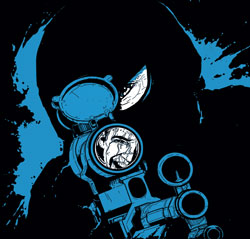 Two years after critiquing volume one of writer Neil Gibson’s Twisted Dark anthology series, Tim and Mulele take a look at volume 5. The takeaway? An improvement… but a piece of advice: be aware of the difference between “End” and “To Be Continued”.
Two years after critiquing volume one of writer Neil Gibson’s Twisted Dark anthology series, Tim and Mulele take a look at volume 5. The takeaway? An improvement… but a piece of advice: be aware of the difference between “End” and “To Be Continued”.
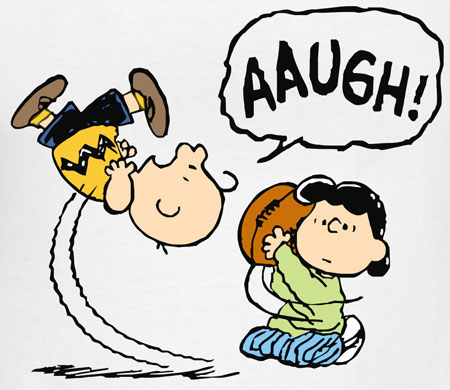
 The digital comics universe continues to expand. This week, Tim looks at two different platforms.
The digital comics universe continues to expand. This week, Tim looks at two different platforms.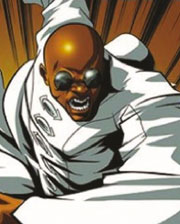 Bayne: Legacy Apocalypse
Bayne: Legacy Apocalypse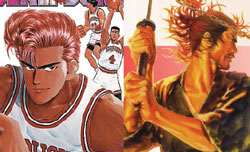 FLASHBACK! Takehiko Inoue’s Slam Dunk is easily mistaken for a serious sports manga. Pick it up, though, and you’ll find instead a hilarious ensemble comedy that just happens to involve basketball. Still, the series is credited with basketball’s 90s popularity in Japan, and led Inoue to create several other basketball-related series. But is oeuvre isn’t all hoops; he’s also the creator behind Vagabond, a sometimes-violent but intriguing take on the life of 17th-century historical figure Miyamoto Musashi. Tim and Kumar dig into both series.
FLASHBACK! Takehiko Inoue’s Slam Dunk is easily mistaken for a serious sports manga. Pick it up, though, and you’ll find instead a hilarious ensemble comedy that just happens to involve basketball. Still, the series is credited with basketball’s 90s popularity in Japan, and led Inoue to create several other basketball-related series. But is oeuvre isn’t all hoops; he’s also the creator behind Vagabond, a sometimes-violent but intriguing take on the life of 17th-century historical figure Miyamoto Musashi. Tim and Kumar dig into both series. You heard many of the artists who attended Tokyo’s International Comics Festival (Kaigai Manga Festa) back in November. But how are the comics themselves? This week Mulele and Tim read some of the comics they picked up at the festival and discuss some of the best!
You heard many of the artists who attended Tokyo’s International Comics Festival (Kaigai Manga Festa) back in November. But how are the comics themselves? This week Mulele and Tim read some of the comics they picked up at the festival and discuss some of the best!
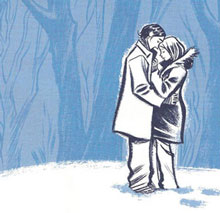 FLASHBACK! Tim and Brandon cover Craig Thompson’s award-winning Blankets. Also, we got an e-mail from this guy named (ulp) Larry Young…
FLASHBACK! Tim and Brandon cover Craig Thompson’s award-winning Blankets. Also, we got an e-mail from this guy named (ulp) Larry Young… I’m planning to make some changes in my employment situation this spring. It would be great if I could start to move podcasting from “hobby” status and make it part of the “employment” picture!
I’m planning to make some changes in my employment situation this spring. It would be great if I could start to move podcasting from “hobby” status and make it part of the “employment” picture!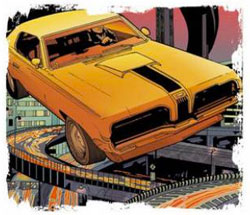 FLASHBACK! The Black Diamond is a miniseries named after a highway. Tim and Brandon rip it a new exit ramp.
FLASHBACK! The Black Diamond is a miniseries named after a highway. Tim and Brandon rip it a new exit ramp.